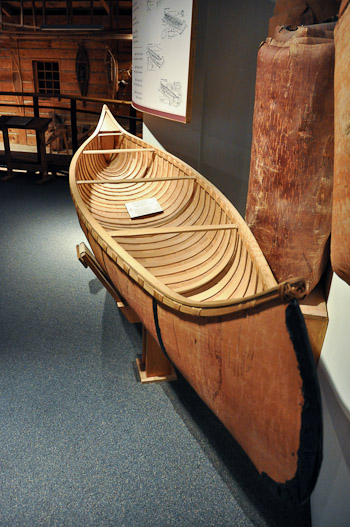
For canoeists, paddling in Canada is like coming home. In this land of natural waterways, the canoe just makes sense.
But to fully appreciate the canoe’s importance, one has to take some time to gain an historical perspective.
Canada’s history is inextricably linked to this iconic craft.
Invented by First Nations, adopted and exploited by explorers, missionaries and traders, the canoe shaped Canada as a nation.
To this day the canoe remains part of the Canadian psyche and is embedded firmly in its culture.
Where better, then, for members of our French River Expedition to gain an appreciation of Canada’s relationship with the canoe than the Canadian Canoe Museum?
Indigenous Vessels
The Canadian Canoe Museum has wonderful displays of native Canadian vessels.
These are craft that have been crafted; from west coast whaling canoes hewn from western red cedars to sealskin-covered Inuit hunting kayaks to canoes hulled with birch bark from the eastern woodlands.
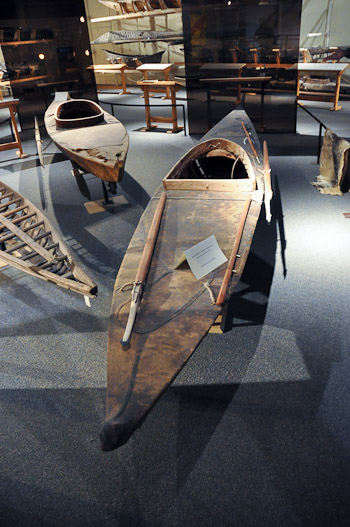
A Paddlers Pilgrimage
For anyone interested in native peoples, anthropology or bushcraft – not to mention paddling – this place deserves a pilgrimage for these displays alone.
“The northern part of North America is really the Mecca of the canoe. It’s where the vessel we’re all familiar with as a canoe was invented by the aboriginal people. Wherever birch trees grew, these vessels were created and if you were to draw a map of those areas, you’d really have a map of Canada.” John Jennings, author of The Canoe: A Living Tradition.
A World Class Collection
The Canadian Canoe Museum is much more than a collection of canoes from Canada. The museum houses the world’s largest collection of man-powered watercraft. One of the museum’s mandates is to collect aboriginal craft from all over the world.
Gaining An Historical Perspective
Frontier Bushcraft’s French River Expedition is our foundational Canadian canoe trip. The aim of the expedition is to give participants a rounded set of expedition canoeing skills. These skills are developed over the course of 10 days on the French River, Canada’s first Heritage River and a waterway with unrivalled importance in the history of Canada.

The French River was a native trade route before it saw the passage of missionaries and explorers in the 17th Century. It then became a major freight highway for the trade canoes wishing to access the Great Lakes.

There is something very special about paddling the same waters, treading the same portages and sleeping on the same camping sites as natives, explorers and voyageurs. If you know what went on throughout this land, you can’t help but be moved by its history.
On our way to the French River, therefore, we stop off in Peterborough, Ontario to visit the Canoe Museum. We arrange for a guided tour of the exhibits to provide further insight.
A Guided Tour Of The Canadian Canoe Museum
Our guide around the museum on our recent trip was Dale Standen, a retired Professor of History from Trent University, Peterborough. Dale was a member of a small group of passionate canoeists amongst the staff of Trent University in the 1970s.
This group formed into the first committee working towards bringing Kirk Wipper‘s collection of canoes to Peterborough – a process which eventually resulted in the birth of the Canadian Canoe Museum. It was great to have Dale take us around the museum.
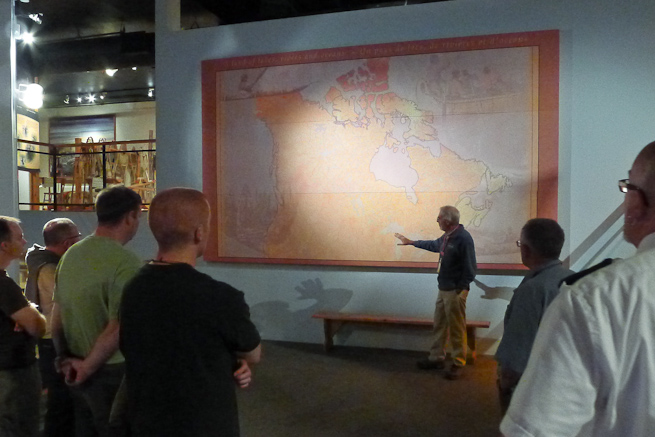
Dale’s talk was engaging and illuminating throughout. He started with a short history of the museum and its collection before firmly planting the importance of the canoe in its historical context.
A pass through the galleries of exquisite native vessels made one thing very clear – the apogee of these designs was reached long before we started making them from modern materials.
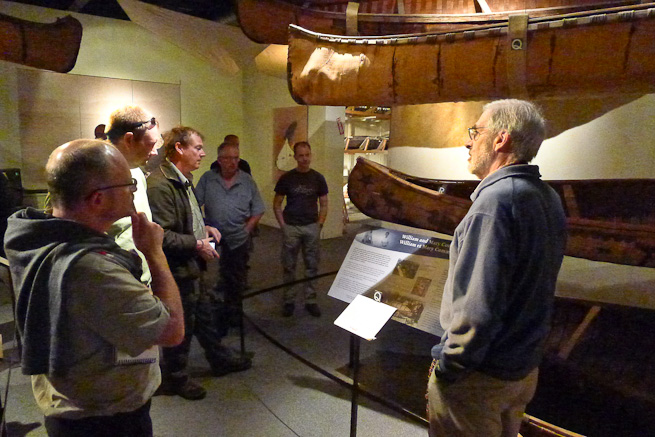
This was followed by an insight into the fur trade era, Hudson’s Bay Company and George Simpson.
Our tour then continued into the more modern era of the canoe as a leisure craft, with beautiful examples of the eponymous Peterborough Canoe on display.
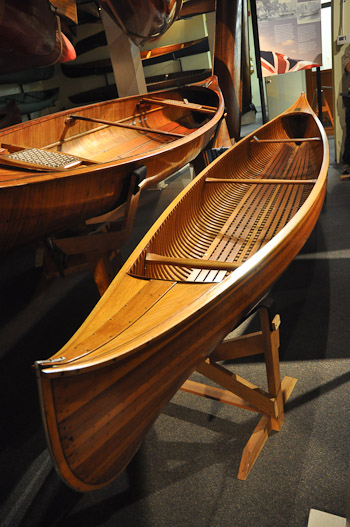
Wilderness Canoe Inspiration
At every turn in this place there is wilderness canoeing and bushcraft inspiration.
Our tour culminated in front of Bill Mason’s iconic red cedar canvas canoe.
What greater inspiration could we have asked for before heading off into the wilds?…
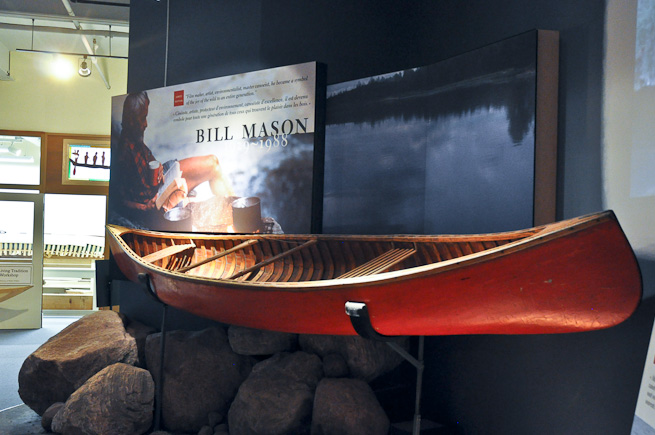
Latest posts by Paul Kirtley (see all)
- The Swedish Firesteel - January 5, 2023
- Kevin Callan and Paul Kirtley in Conversation - April 25, 2020
- Kevin Callan and Ray Goodwin in Conversation - April 18, 2020

Dave
Great Post Paul.
I copy/paisted the Bill Mason photo, i have 2 of his Books, Path of the Paddle & Song of the Paddle. Great books. I hope to get back east & visit the museum. Cheers
Paul Kirtley
Hi Dave,
Yep, they are both classic books. Definitely take the time to visit if you are ever in the Toronto area…
Cheers,
Paul
hamish
Thanks Paul, I dont need to keep a diary, make notes or take photos with you around, its like having my own personal biographer with me. Thanks Paul for an excellent trip . Almost finished my 3.5 hr DVD will send you it in segments on an HD should get next week.
Paul Kirtley
We aim to please, Hamish! I can’t promise to document all of your adventures, however 🙂
Looking forward to seeing your video footage.
Cheers,
Paul
Nige
A long with a trip to Canada, visiting the Canoe Museum is high up on my bucket list.
Awesome post Paul! All I can say is “one day”. 🙂
Paul Kirtley
Thanks Nige. You won’t regret taking the time out to visit the museum 🙂
Roger Mooberry
Check out John McPhee’s book about birchbark canoes. The Survival of the Bark Canoe.
Also a fantastic reference is Chapelle’s, Bark and Skin Craft.
Paul Kirtley
Hi Roger,
Thanks for your comments. I have both books 🙂 I particularly enjoyed McPhee’s crisp writing applied to the bark canoe and his trip with Vaillancourt.
Definitely required reading for anyone else looking at these comments and not familiar with these works.
Warm regards,
Paul